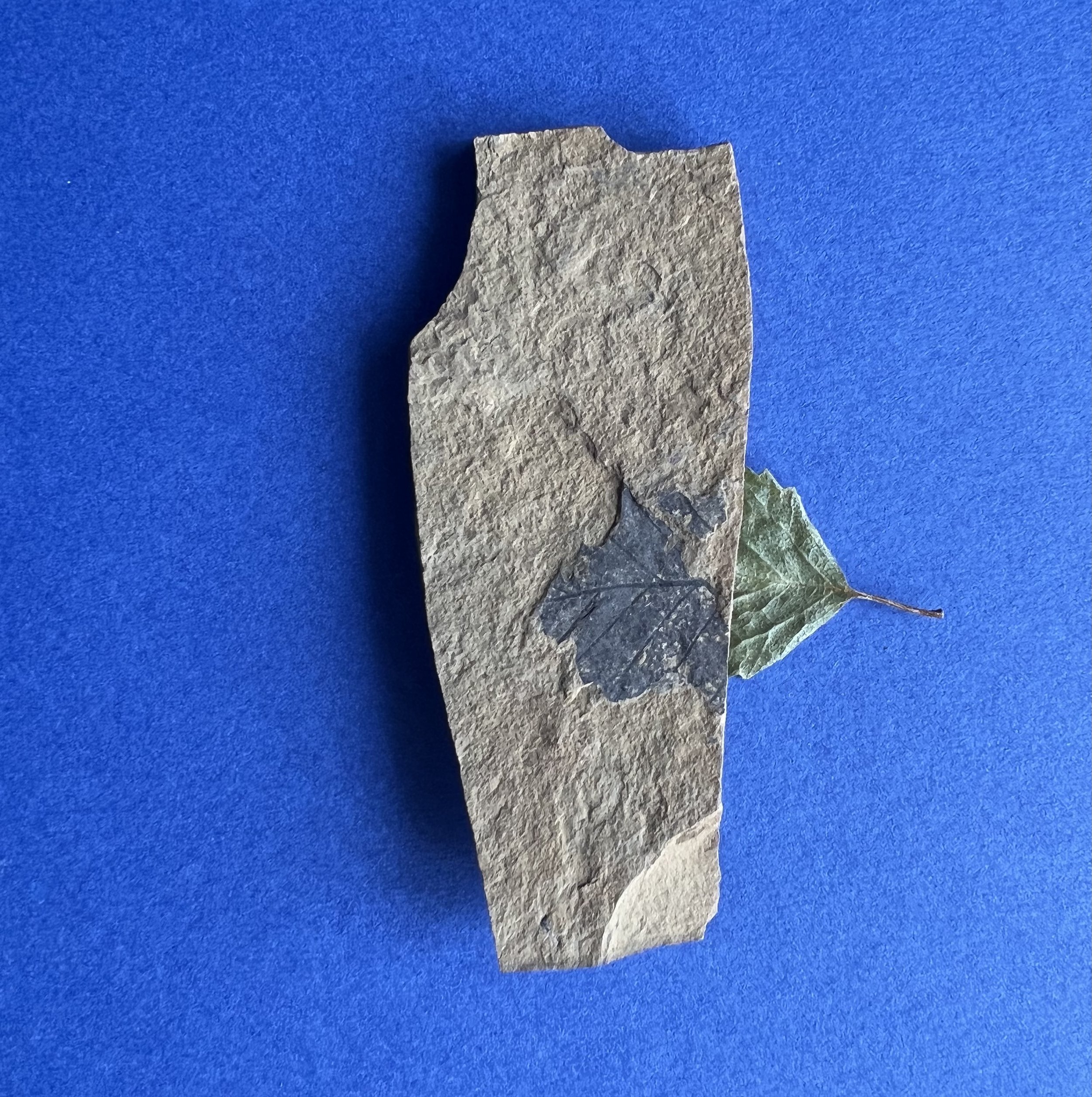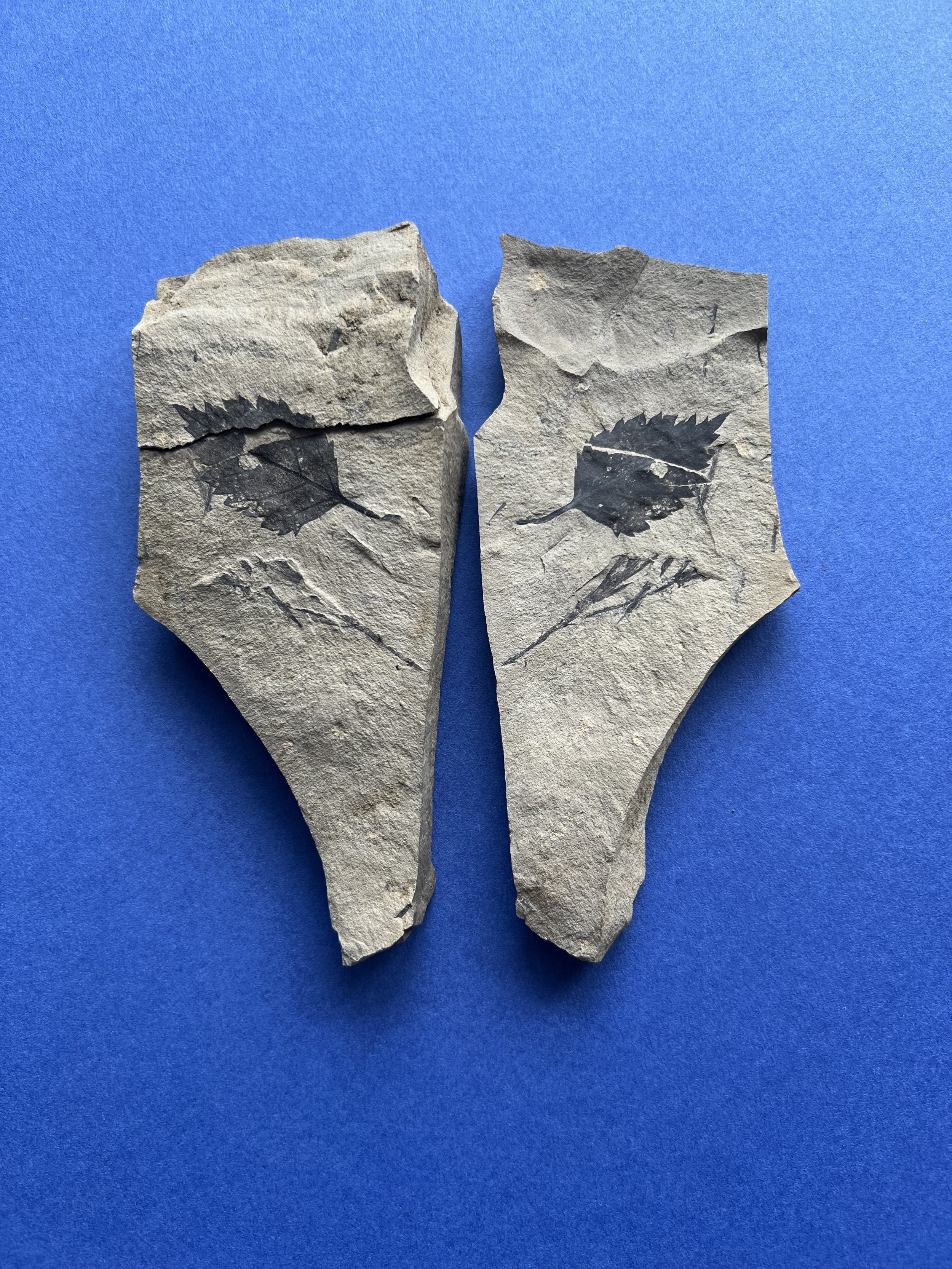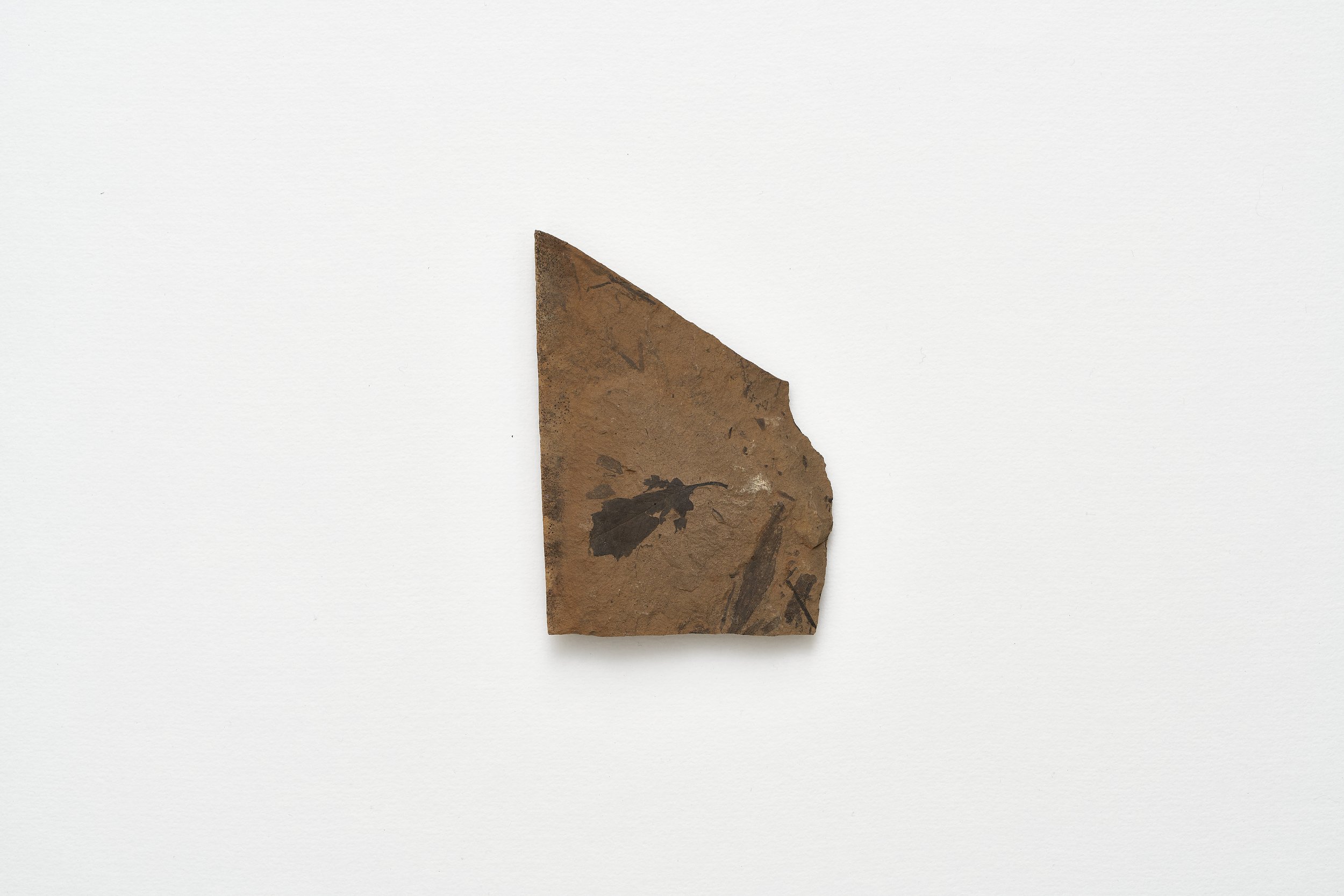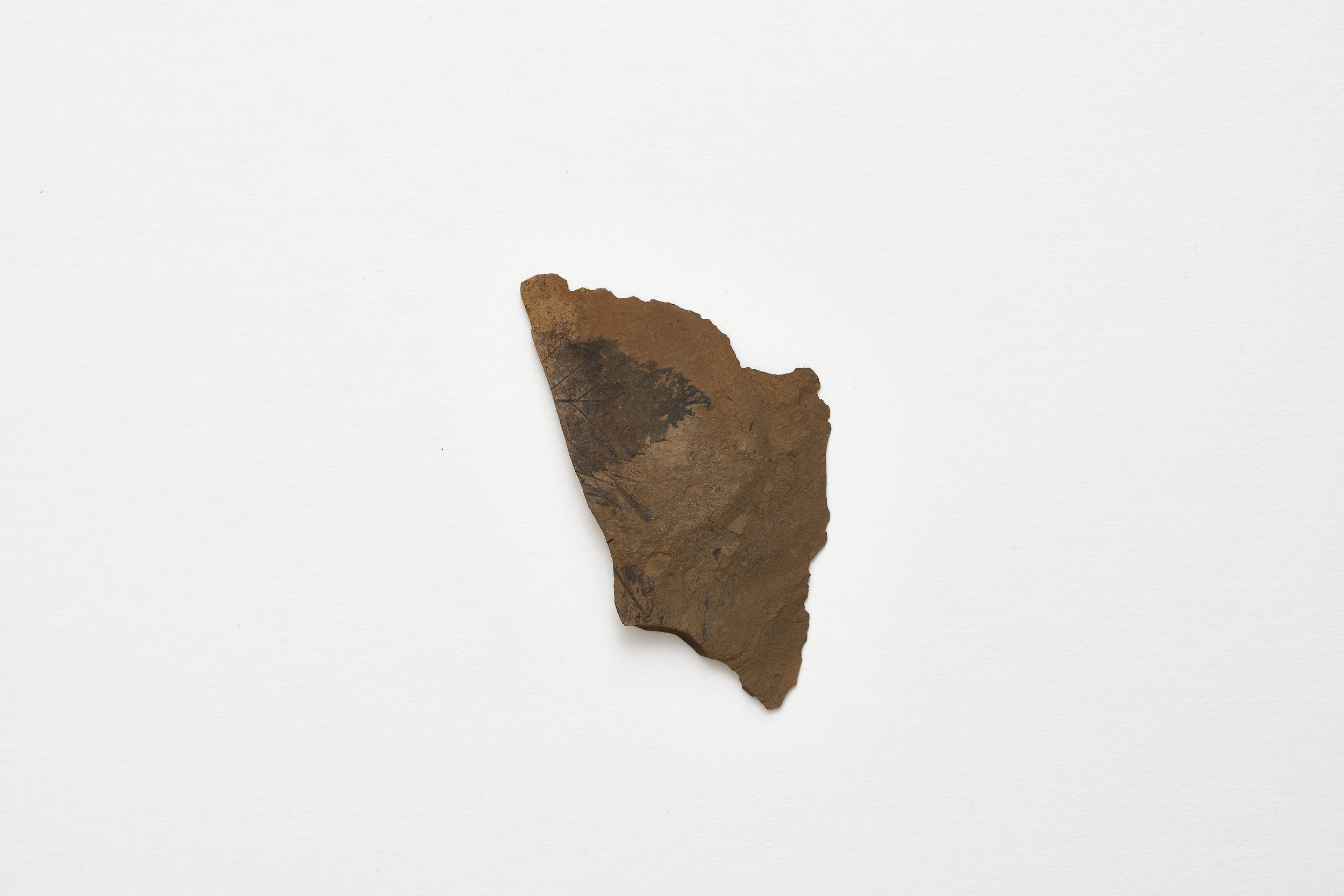The solo exhibition That Which the Pleistocene Created was presented at Kompan in Siglufjörður May 2023. The exhibition consisted of a silver relief print, grains of black sand, fossils, blue poplar, moss and magazine from 1966.
In the installation That Which the Pleistocene Created, the subject is time, both as the prerequisite for life and as a part of it. How images frame an understanding of the natural forces that we are a part of and are often reminded that we need to obey. How words support the narrative we create to understand ourselves within our environment.
It is impossible to form a mental picture of the fourth dimension.
- Lt. Col. Graham Derby Fitch. The Fourth Dimension Simply Explained, 1910.
1 What is impossible about shaping in your mind an image of the fourth dimension, an image of time? Or to visualise it, create a picture? Was this impossible 113 years ago but is well doable nowadays? For example by imagining Warhol’s portraits alive with a few seconds of videos of people blinking their eyes? Was it impossible to picture time in your mind, before the arrival of the moving pictures?
2 Or is it enough to look at a fjord, imagine how it was carved by a glacier a million years before man entered the picture? Is it at all impossible to imagine the fourth dimension in reverse, remember something that was? Or to perceive it as a fleeting moment?
3 Maybe it’s only the last part of the dimension that remains hidden and is impossible to give final shape in the mind. Maybe it’s only the image of what lies ahead that we can never form completely. And therefore, it is impossible to form an image of time in your head.
4 Fjords are created when glaciers melt. The water seeks out frailty in the rock, the river erodes the rock down into the ocean. The earth’s transformation creates something new, creates the prerequisite for human existence – a tiny part of life itself.
5 Each fjord is unique. Each fjord has its look, its time is marked by the history of the people who live there.
6 Siglufjörður’s oldest part is just over 11 million years old. The youngest part is a bit younger.
7 When numbers reach a certain point, we stop understanding them. They become abstract. Like in discussion about debt ceilings or national budgets. Hundreds of thousands of dead in a war. Ten thousand years or more. Almost all numbers related to geological time or evolution theories feel abstract.
8 Yet you feel, with a few exceptions, that time always passes in the same way.
9 The highlands are our Ramses II, reminiscent of Shelley’s Ozymandias. Nothing but big boulders and glacial striae. These glacial striae were carved by sand. Pebbles as remembrance.
10 I don’t know of any photographs of the first sunny days following the Siglufjörður avalanche in 1919. Or other avalanches. Although we know that they will come. But there are descriptions of the weather in the days before the death of Guðmundur Skarphéðinsson.
11 Time is not a copy, we can’t copy time even if we try. What was is gone.
12 In films, time can pass quickly in two ways. A text appears on the screen: Three years later, and that’s three years gone. Or in a music montage of scenes. When the music stops, time has jumped forward days, weeks, months, years. I don’t know what it means, probably that music is a time machine.
13 A text can also be a time machine. Among other things.
14 Sometimes, we can use a text to create an idea, larger than we understand in our everyday life. Then, we create diagrams to explain it completely. Like when physics explains the nature of light with images and prism. Or when Einstein explained time’s relativity with an example of a man who burns his hand and feels time slowing down, or a man who falls in love and feels time rushing on. What then happens to a man who burns his hand on a date?
15 We create images with texts and understand text through images.
16 We put forward an idea of the origin of all things: Big Bang and draw diagrams that most resemble a cup or a graal sideways, with a well-founded starting point. As small as the full-stop at the end of this sentence.
17 Sometimes I don’t understand why we must break down time.
18 That is: Why must we break down time into clear patterns?
19 Once, I thought the most beautiful version of time’s breakdown would be working hours of 17 months and three weeks. There would be more ends of months.
20 Maybe life would be even better if the weeks in each month were irregular, like pi’s decimal places?
21 However, time is more than an image. At least not a simple one. It is passing, an image of (or recollection of) an older passing, and a fancy about an upcoming passing. It is three things. Three types of units, each of which consists of three dimensions (length, width, heigth).
22 If not a memory, then a rock. If not life, then a picture. If not certainty, then an image or text. This is and will be a way to understand time.
23 Time distorts, it is a distortion of that which has been.
24 Still, the most important thing is that although life begets a story, your life is more than just a story. Because here, same as elsewhere, we rewrite the ending each day.








